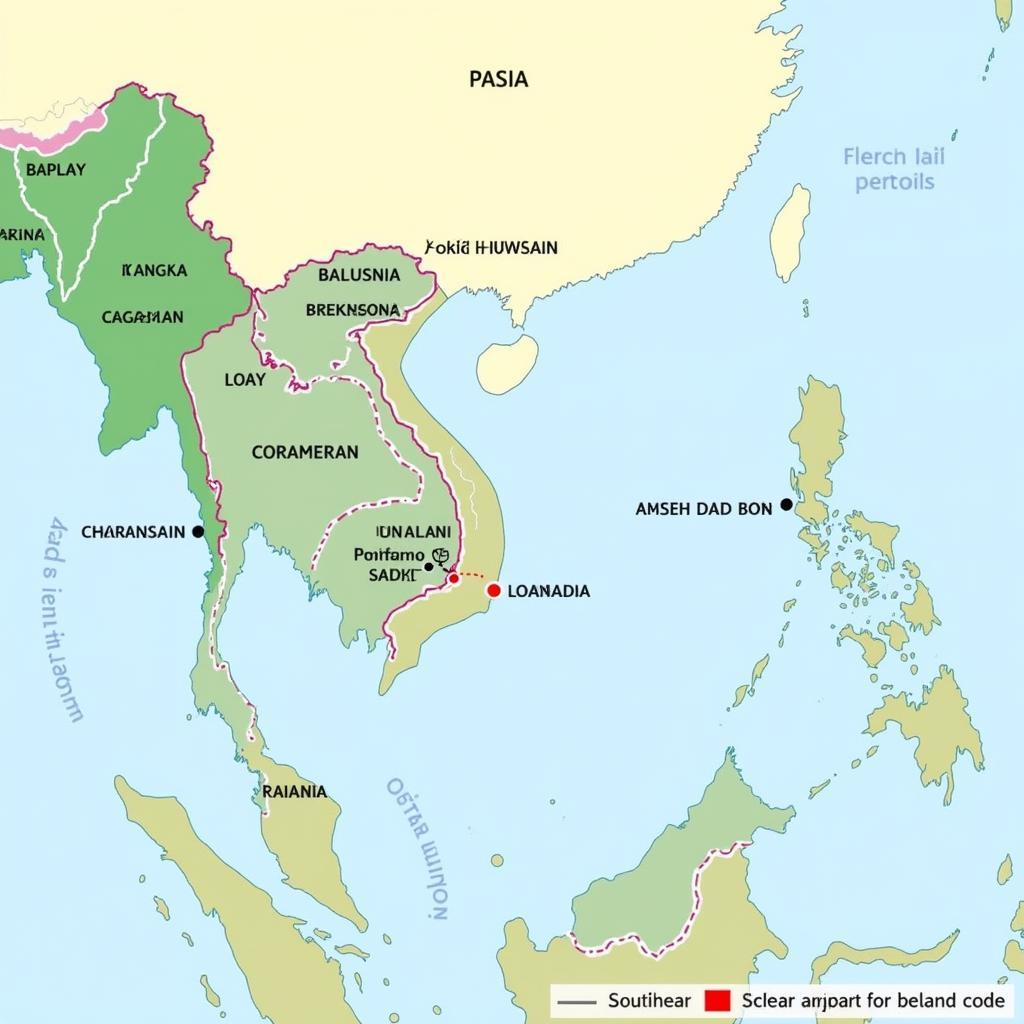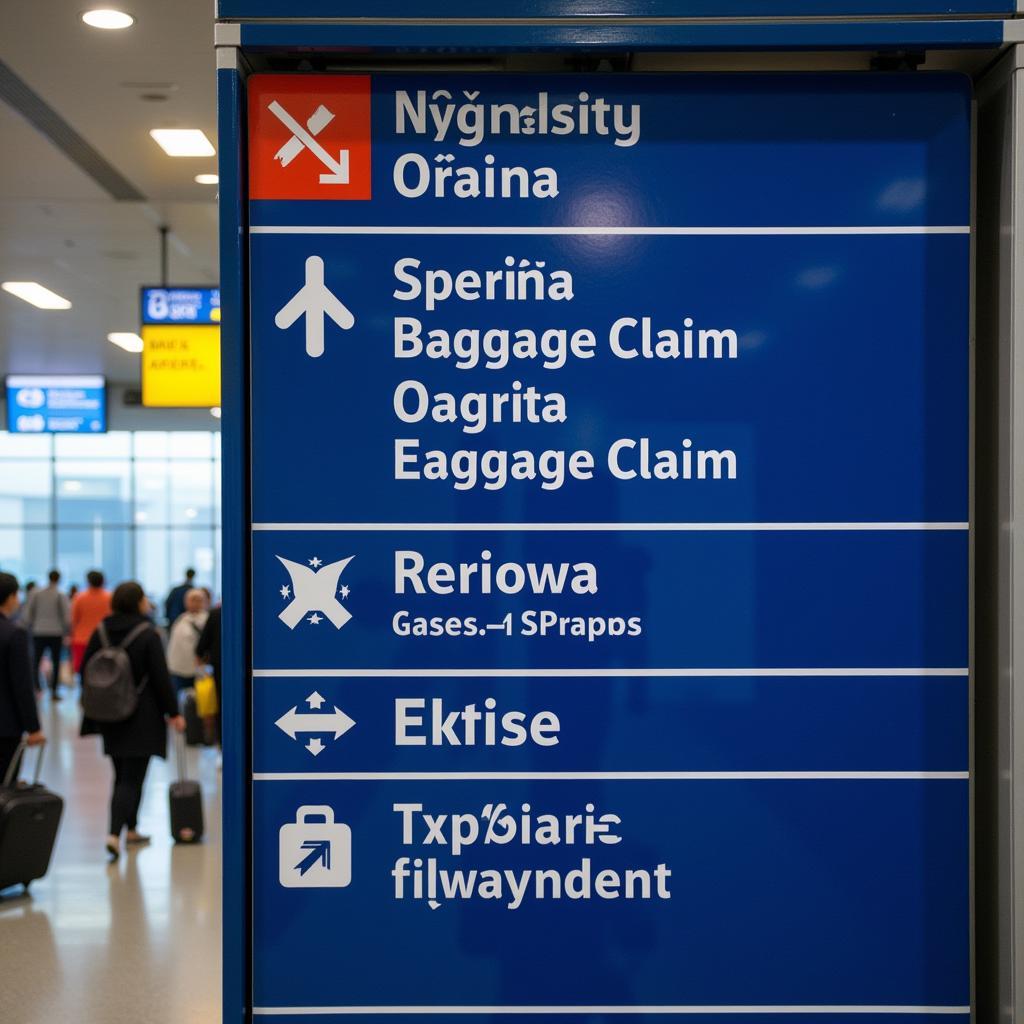Planning a trip to Southeast Asia and feeling overwhelmed by the sheer number of airports? Don’t fret! This ASEAN airport wiki is your one-stop resource for navigating the region’s busiest airports. From understanding airport codes and finding your way around to discovering hidden gems and local travel tips, we’ve got you covered.
Decoding the ASEAN Airport Map: A Traveler’s Cheat Sheet
Southeast Asia boasts a vast network of international and domestic airports, each with its own unique code. Understanding these codes is crucial for smooth travel planning. Let’s demystify some of the most common ones:
- BKK: Suvarnabhumi Airport (Bangkok, Thailand)
- SIN: Changi Airport (Singapore)
- KUL: Kuala Lumpur International Airport (Malaysia)
- CGK: Soekarno-Hatta International Airport (Jakarta, Indonesia)
- MNL: Ninoy Aquino International Airport (Manila, Philippines)
 Southeast Asia Airport Map
Southeast Asia Airport Map
Navigating ASEAN Airports: Tips and Tricks for a Seamless Journey
Navigating unfamiliar airports can be daunting. Here are some tried-and-tested tips to ensure a smooth experience:
- Arrive Early: International flights often recommend arriving 3 hours prior to departure. This gives you ample time for check-in, security, and immigration.
- Stay Connected: Most ASEAN airports offer free Wi-Fi. Connect to the airport’s network upon arrival to stay updated on flight information, download maps, or stay connected with loved ones.
- Currency Exchange: While it’s generally advisable to exchange currency before your trip, most airports have currency exchange counters. However, be mindful of exchange rates and potential fees.
- Transportation Options: Research transportation options from the airport to your destination beforehand. Options often include taxis, airport shuttles, buses, and trains.
 Airport Navigation Signage
Airport Navigation Signage
Beyond the Terminal: Unveiling the Hidden Gems of ASEAN Airports
ASEAN airports are more than just transit points; they offer a glimpse into the local culture and often house hidden gems waiting to be discovered.
- Culinary Delights: Indulge in a diverse range of culinary experiences, from street food stalls offering local delicacies to upscale restaurants serving international cuisine.
- Shopping Spree: Many ASEAN airports boast extensive duty-free shopping areas where you can find great deals on souvenirs, electronics, and more.
- Relax and Recharge: Need a break from the hustle and bustle? Many airports offer lounges, spas, and even gardens for relaxation and rejuvenation.
Expert Insights:
“ASEAN airports are constantly evolving to provide world-class facilities and experiences,” says Amelia Tran, a travel blogger specializing in Southeast Asia. “Don’t hesitate to approach airport staff or information counters for assistance – they are generally very helpful and can offer valuable local insights.”
ASEAN Airport Wiki: Your Gateway to Unforgettable Adventures
From the bustling terminals of Bangkok and Singapore to the serene landscapes surrounding airports in Bali and Phuket, ASEAN’s airports offer a unique blend of efficiency and cultural immersion. Armed with this ASEAN airport wiki, you’re now equipped to navigate these hubs with ease and embark on unforgettable adventures in Southeast Asia.
Frequently Asked Questions
1. What is the best way to get from the airport to the city center in Kuala Lumpur?
The KLIA Ekspres train offers a fast and efficient connection between Kuala Lumpur International Airport (KUL) and KL Sentral, the city’s main transportation hub.
2. Are there left luggage facilities at Suvarnabhumi Airport (BKK)?
Yes, Suvarnabhumi Airport provides left luggage services at various locations within the terminal. You can safely store your bags for a few hours or even days.
3. Do I need a visa to transit through Singapore Changi Airport (SIN)?
Visa requirements for transiting through Changi Airport depend on your nationality and the duration of your layover. It’s essential to check the specific visa regulations based on your citizenship.
4. What is the currency used in most ASEAN countries?
While each country has its currency, the US dollar is widely accepted in most ASEAN nations. However, it’s always advisable to have some local currency on hand for smaller purchases and transportation.
5. Are there any cultural etiquettes I should be aware of at ASEAN airports?
Respectful behavior and attire are generally appreciated in Southeast Asian cultures. Avoid wearing revealing clothing and be mindful of local customs, such as removing your shoes before entering certain areas.
Need More Help Navigating Your ASEAN Adventure?
For personalized travel assistance and support, don’t hesitate to reach out to our dedicated team. You can contact us at +84 369 020 373 or email us at [email protected]. We are also located in the heart of Southeast Asia at Ngoc Lien Village, Hiep Hoa, Bac Giang, Vietnam. Let us help you make your Southeast Asia journey truly unforgettable!
